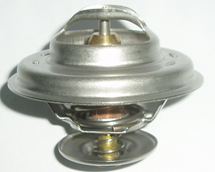The engine coolant thermostat is a valve that controls the flow of coolant through the engine. It is located in the engine compartment and is typically located near the front of the engine, near the radiator.
The thermostat is designed to open and close based on the temperature of the coolant. When the engine is cold, the thermostat is closed, preventing coolant from flowing through the engine. As the engine warms up, the thermostat begins to open, allowing coolant to flow through the engine and help regulate its temperature.
A faulty thermostat can cause problems with the engine’s cooling system. If the thermostat becomes stuck in the closed position, it can cause the engine to overheat. If the thermostat becomes stuck in the open position, it can cause the engine to run too cold, which can also lead to problems. If you suspect that your engine coolant thermostat is not functioning properly, it is recommended to have it checked by a mechanic.

engine coolant thermostat replacement
To replace the engine coolant thermostat in a vehicle, you will need to follow these steps:
- Locate the thermostat: The thermostat is typically located near the front of the engine, near the radiator.
- Drain the coolant: Open the radiator drain valve or remove the lower radiator hose to drain the coolant from the engine.
- Remove the thermostat housing: The thermostat housing is typically located near the front of the engine and is secured with bolts. Use a wrench to remove the bolts and lift the housing off of the engine.
- Remove the old thermostat: Once the housing is removed, you should be able to see the thermostat. Carefully remove the old thermostat from the housing.
- Install the new thermostat: Place the new thermostat in the housing, making sure that it is seated correctly.
- Reinstall the housing: Place the housing back on the engine and secure it with the bolts.
- Refill the coolant: Add new coolant to the radiator until it is full.
It’s important to follow the manufacturer’s instructions and use the correct tools when replacing the engine coolant thermostat. If you are not comfortable performing this repair, it is recommended to seek the help of a professional mechanic.
